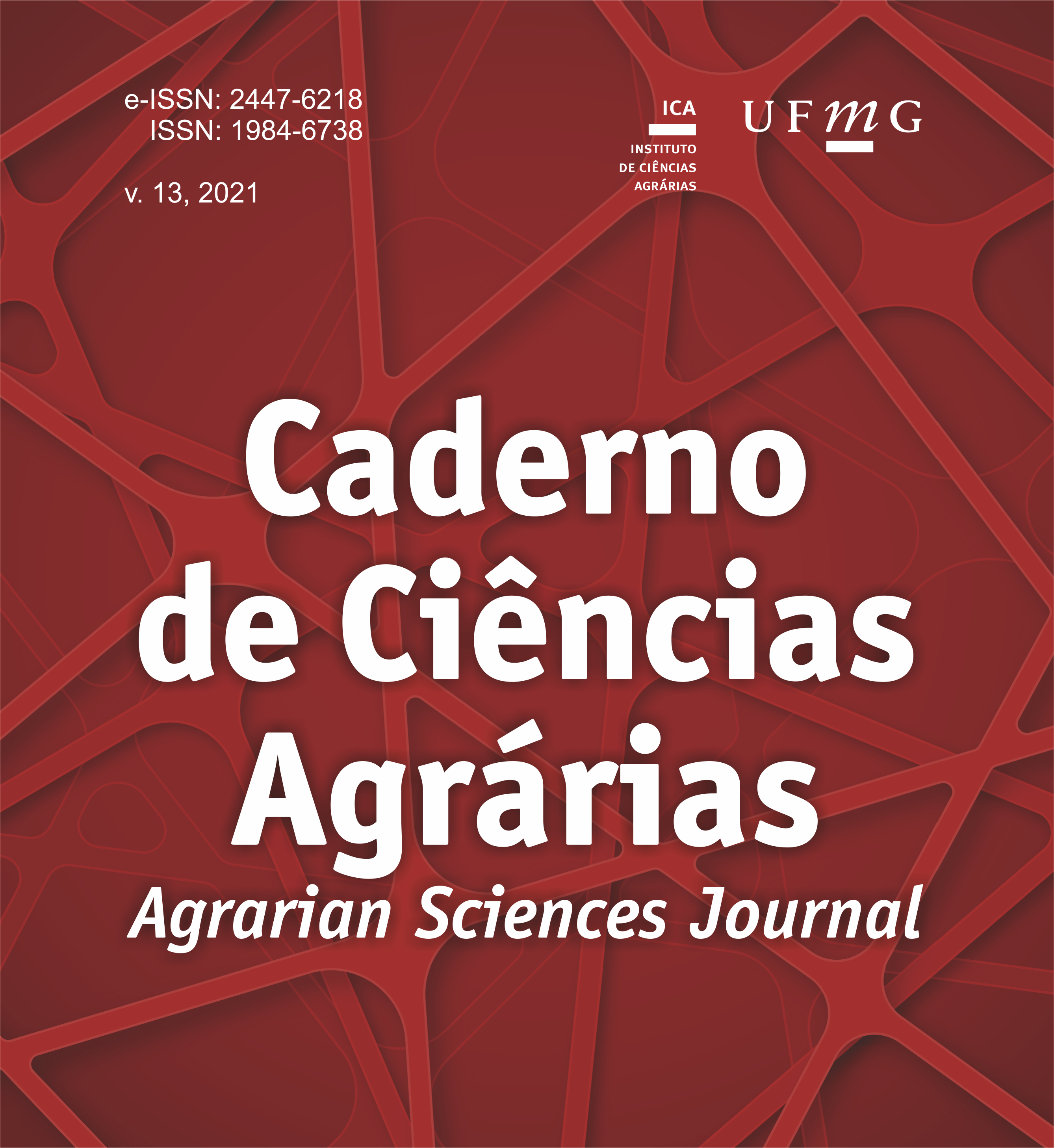Search for Staphylococcus spp. in “Minas Frescal” cheeses made with raw milk and commercialized in the city of Formiga - MG
DOI:
https://doi.org/10.35699/2447-6218.2021.32993Keywords:
Contamination, Foodborne illness, Pathogenic MicroganismAbstract
“Minas Frescal” cheese is defined by legislation as a fresh cheese obtained by enzymatic coagulation of the milk with rennet and/or other appropriate coagulant enzymes, supplemented or not with the action of specific lactic bacteria. Brazilian law requires cheese to be made from pasteurized milk and prohibits marketing when made with raw milk, considering the risk of being an important vehicle of pathogenic microorganisms. The objective of this work was to analyze the presence of Staphylococcus spp. in artisanal "Minas Frescal" type cheeses made with raw milk and sold locally in the municipality of Formiga, Minas Gerais. The microbiological standard for this microorganism is defined in technical regulation. Plating in Mannitol Salt Agar was conducted in order to search for Staphylococcus spp. and differentiate S. aureus from non S. aureus. Results obtained from analyzed samples (104 to 106 CFU/g) suggest the presence of Staphylococcus aureus above the maximum established limits (102 CFU/g). It can be concluded that sampled cheeses were not suitable for consumption due to high counts of Staphylococcus spp., which could be due to the fact of their production with raw milk.
References
Brasil. 1969. Decreto de lei nº 923. Comercialização do leite. Ministério da Marinha de Guerra, do exército e da Aeronáutica Militar. 31 de agosto de 1969.
Brasil. 1996. Portaria nº 146. Regulamentos Técnicos de Identidade e Qualidade dos Produtos Lácteos. Ministério da Agricultura, Pecuária e Abastecimento. 7 de março de 1996.
Brasil. 1997. Portaria nº 451. Boas Práticas de Produção de Alimentos e Prestação de Serviços na área da Alimentação. Ministério da Saúde. Secretaria de Vigilância Sanitária. 19 de setembro de 1997.
Brasil. 2013. Instrução normativa nº 57. Rede Nacional de Laboratórios Agropecuários do Sistema Unificado de Atenção à Sanidade Agropecuária. Ministério da Agricultura, Pecuária e Abastecimento. 11 de dezembro de 2013.
Dittmann, K.K.; Chaul, L.T.; Lee, S.H.I.; Corassin, C.H.; Carlos, A.F.O.; Martinis, E. C. P.; Alves F.V.; Lone, O.V.G. 2017. Staphylococcus aureus in Some Brazilian Dairy Industries: Changes of Contamination and Diversity. Frontiers in Microbiology, 8:2049. http://dx.doi.org/10.3389/fmicb.2017.02049
Filho, E.S.A.; Filho, A.N. 2000. Ocorrência de Staphylococcus aureus em queijo tipo “frescal.” Revista de Saúde Pública, 3: 578–580.
Forsythe, S.J. 2013. Microbiologia da segurança dos alimentos. 2 ed. Porto Alegre: Artmed.
Grace, F.W.; Havellar, A.H. 2020. Milk Symposium review: Foodborne diseases from milk and milk products in developing countries – Review of causes and health economic implications. Journal of Dairy Sciences, 103: 9715-9729. https://doi.org/10.3168/jds.2020-18323
Heilmann, C.; Ziebuhr, W.; Becker K. 2019. Are coagulase-negative staphylococci virulent? Clinical Microbiology and Infection, 25:1071-1080. https://doi.org/10.1016/j.cmi.2018.11.012
Lima, A.A.L.; Cardoso, A.J.V.S. 2019. Qualidade microbiológica de queijo Minas frescal, artesanal, comercializados em feiras livres do Distrito Federal. Brazilian Journal of Development, 5: 13673-13688. http://dx.doi.org/ 10.34117/bjdv5n9-005
Lindsay, D.; Robertson, R.; Fraser, R.; Engstrom, S.; Jordan, K. 2021. Heat induced inactivation of microorganisms in milk and dairy products, International Dairy Journal, 121: 105096. https://doi.org/10.1016/j.idairyj.2021.105096.
Martins, E. 2012. Associação de bacteriocinas e bactérias lácticas para inibição de Staphylococcus aureus em queijo Minas frescal. Viçosa: Universidade Federal de Viçosa, 39f. Dissertação (Mestrado em Microbiologia Agrícola).
Rosa, D.L.S.O.; Acurcio, L.B.; Sant’Anna, F.M.; Castro, R.D.; Rosa, B.O.; Sandes, S.H.C.; Silva, A.M.; Souza, M.R.; Cerqueira, M.M.O.P. 2015. Detecção de genes toxigênicos, susceptibilidade antimicrobiana e antagonismo in vitro de Staphylococcus spp. isolados de queijos artesanais. Vigilância Sanitária Em Debate, 3:37–42. https://doi.org/10.3395/2317-269x.00226
Santos, T.S.; Carvalho, D. A. 2013. Atuação e importância do médico veterinário na cadeia produtiva do leite. Veterinária Em Foco, 10:149–158.
Santos, E.V.; Cesar, E.L.; Virginio, G.V.; Neto, J.F.; Santos, C.C.L.; Sousa, P.E. 2019. Influência do revestimento comestível à base de fécula de mandioca e óleo essencial na conservação de queijo minas frescal. Revista Principia - Divulgação Científica e Tecnológica do IFPB, 1:45. http://dx.doi.org/10.18265/1517-03062015v1n45p76-89
Vinha, M.B.; Pinto, C.L.O.; Chaves, J.B.P. 2018. Estafilococos coagulase positiva em queijos Minas Frescal produzidos em agroindústrias familiares. Revista do Instituto Laticínios Cândido Tostes, 73: 62-72. https://doi.org/10.14295/2238-6416.v73i2.656
Zurita, J.; Mejía, C.; Blanco, M.G. 2010. Diagnóstico e teste de sensibilidade para Staphylococcus aureus resistente à meticilina na América Latina.The Brazilian Journal of Infectious Diseases, 14: 97-107. https://doi.org/10.1590/S1413-86702010000800005
Published
Issue
Section
License
Copyright (c) 2021 Agrarian Sciences Journal

This work is licensed under a Creative Commons Attribution-NonCommercial-NoDerivatives 4.0 International License.
Authors who publish in this journal agree to the following terms:
The Copyright for articles published in this journal follow authorship. The articles are open access, with their own attributions, in educational and non-commercial applications.
The journal reserves the right to make regulatory, orthographic and grammatical changes in the originals, with the aim of maintaining the standard language and the credibility of the vehicle. It will respect, however, the writing style of the authors.
Changes, corrections or suggestions of conceptual order will be forwarded to the authors, when necessary. In such cases, the articles, once appropriate, should be submitted for further consideration.
The opinions issued by the authors of the articles are their sole responsibility.







